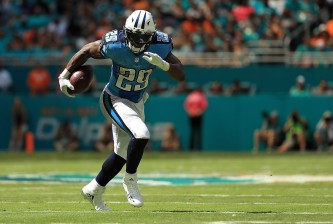Green Bay Packers wide receiver Jordy Nelson is believed to have torn his ACL Sunday in an exhibition game that was of little value to the veteran. There doesn’t seem to be much anyone can do about non-contact injuries, but just about every team spends the preseason trying to manage playing time of key veterans to reduce injury risk.
No one loves preseason games. Even the owners—the largest beneficiaries of the exhibitions—don’t like seeing star players get hurt during meaningless games.
The preseason needs an overhaul. The only problem is finding a solution that works for the owners, players and fans.
Simply shaving one or two games off the preseason schedule doesn’t work economically for owners. It also reduces opportunities for young players to prove themselves before teams have to trim the roster to 53 players.
For players like Nelson, there is no reward for playing in three or four preseason games. The preseason is about young players and fringe talents competing. The problem is that games comprised entirely of these types of players aren’t very fun to watch.
What the NFL needs is a comprehensive approach that starts with the elimination of preseason games entirely. Up to two scrimmages, an 18-game schedule with two bye weeks, expanded playoffs, bigger rosters and an MLB-style disabled list would be a vast improvement for all parties involved, if they are willing to consider it.
Owners would get their share of 32 additional games plus two additional playoff games, of which they get a larger share of the pie. That would more than replace any revenue lost during the preseason.
Vested veteran players wouldn’t play during the scrimmages, they would get an extra bye week and they would have their base salaries bumped up by 12.5 percent. Players would also see an increase of 12.5 on a prorated portion of their bonuses based on the years left on their contract.
| Format Comparison | Total Quarters Played (Starters) | Exhibition % | Quarters Paid Full Salary |
|---|---|---|---|
| 4/16 Format | 70 | 6 | 64 |
| 0/18 Format | 72 | 0 | 72 |
| Difference | +2.9% | -22.9% | +12.5% |
| Format Comparison | Bye Weeks | Non-Vet Scrimmages | Vet Scrimmages |
|---|---|---|---|
| 4/16 Format | 1 | 1 | 1 |
| 0/18 Format | 2 | 2 | 0 |
| Difference | +1 | +1 | -1 |
Non-vested players would get the same benefits, but they would have to play in up to two training camp scrimmages at the team’s option. Teams would be free to treat these like they do preseason games now, but vested veterans could not play in them by rule.
In return, the NFL would have an 11-player “expanded roster” in addition to an 11-player practice squad. This would be enough for a full scout team on offense and defense, something that would be helpful for coaches.
These 11 players would make less than the veteran minimum by rule, but must make more than the highest paid player on the practice squad. They would be eligible to be “called up” to the 53-man roster and other teams couldn’t sign them away by putting them on their 53-man roster as they can with players on the practice squad.
Players could spend no more than one season on the expanded roster, but teams wouldn’t have to pay them a prorated veteran minimum as members of the 53-man roster even when they get the call up. However, they would still accrue games toward becoming a vested veteran. For these reasons, teams may decide to keep more veterans on the 53-man roster and use the expanded roster for developmental purposes.
The NFL would still have an injured reserve, for players lost for the entire season, but they would add disabled lists of 3, 6 and 9 games.. A player on the 53-man roster would have to go on the disabled list before a team could call up a member of their 10-man expanded roster, who would have to remain on the 53-man roster for the duration of the other player’s injury, if healthy. Players on the disabled list would still technically be on the 53-man roster, but could be transferred to injured reserve at any time.
With this comprehensive plan, owners expand their revenue streams, veterans aren’t injured in silly exhibition games and young players have even more opportunity to prove themselves, but would be more fairly compensated as well. Players also get more rest with the added bye week and an opportunity to play again within the season they are injured.
Veterans play only about two more quarters than they do now, but they are paid their salary and the games means something. Young players play a bit more, but coaches have more latitude to protect their best players in scrimmages, if they choose to have them at all.
Fans get more high-quality football and fewer season-crippling injuries in meaningless games. It may not be perfect, but even this framework is a lot better than antiquated preseason games. An overhaul is required, even if surging TV ratings indicate the sport is as popular as ever.























